What is a labrum tear?
Your shoulder is a “ball and socket” joint that connects your arm to your body. Inside your shoulder joint, there is one type of cartilage called the labrum. Your labrum is more rigid than other cartilage that is around the socket part of your shoulder joint.
The main function of the labrum is to deepen the socket so that the ball of your shoulder stays in place. When it’s functioning properly, the labrum is found all around the socket and is attached to the bone around the socket. The labrum also attaches other structures or tissues around your shoulder joint, including the ligaments holding the joint together.
Injuries to your shoulder that tear ligaments can cause the labrum to be pulled off of the rim of the bone around the socket. This causes the ball of your shoulder to slide out of the socket, leading to misalignment or dislocation of the shoulder.
How do you know if you have a labrum tear?
The most common symptom of a labrum tear is a sharp popping sensation felt in your shoulder when you move your shoulder. A prolonged aching in your shoulder often follows the popping sensation. In some cases, a torn labrum may not cause you any pain at all. Instead, your shoulder can appear to feel loose with specific shoulder movements.
How do you diagnose a labrum tear?
Since the labrum is deep in the shoulder, it is very difficult to make a proper diagnosis of a torn labrum with a physical examination alone. Also, there are different types of labrum tears, complicating matters further.
Dr. Gombera performs MRI scans to provide comprehensive diagnoses. An MRI scan is often a reliable way to detect a labrum tear caused by dislocation. However, in some cases, MRI scans can miss smaller tears of the labrum. The most reliable way to accurately diagnose a torn labrum is with arthroscopy of the shoulder, something Dr. Gombera specializes in. Arthroscopy involves inserting a small camera into your shoulder joint so that Dr. Gombera can closely observe the anatomy of your shoulder.
How do you treat a labrum tear?
Dr. Gombera can often manage and treat labrum tears with physical therapy techniques or anti-inflammatory medications and return you to your active lifestyle. In more severe cases, he can opt for minimally invasive methods like arthroscopic procedures to repair your torn labrum through a small incision, as opposed to open surgery. For younger, more active individuals and athletes who are more vulnerable to repeat injuries, Dr. Gombera often recommends arthroscopic procedures.
Arthroscopic repair for a torn labrum involves less recovery time and less pain than open surgery. After treatment, athletes may require six months or up to a year to achieve a full recovery.
To learn more about your treatment options for a torn labrum, call or schedule a consultation online today.




